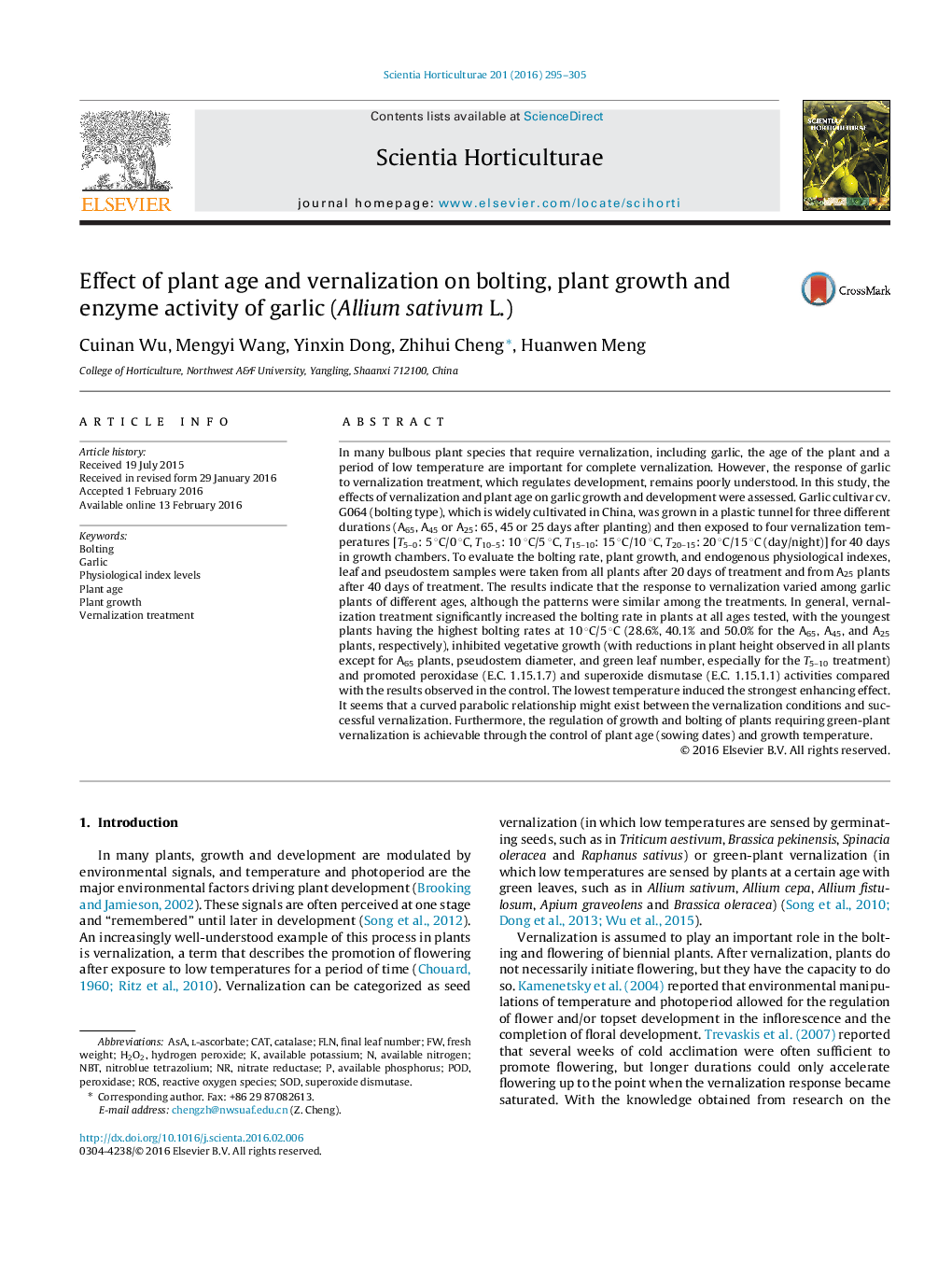| کد مقاله | کد نشریه | سال انتشار | مقاله انگلیسی | نسخه تمام متن |
|---|---|---|---|---|
| 6406434 | 1628797 | 2016 | 11 صفحه PDF | دانلود رایگان |

- Vernalization response of garlic depends on plant age.
- Vernalization treatment significantly promoted bolting ability of garlic.
- Vernalization treatment restrained foliar bud differentiation of garlic.
- POD and SOD activity was significantly improved by vernalization treatment.
- 10 °C/5 °C (day/night) showed significantly strongest vernalization effect.
In many bulbous plant species that require vernalization, including garlic, the age of the plant and a period of low temperature are important for complete vernalization. However, the response of garlic to vernalization treatment, which regulates development, remains poorly understood. In this study, the effects of vernalization and plant age on garlic growth and development were assessed. Garlic cultivar cv. G064 (bolting type), which is widely cultivated in China, was grown in a plastic tunnel for three different durations (A65, A45 or A25: 65, 45 or 25 days after planting) and then exposed to four vernalization temperatures [T5-0: 5 °C/0 °C, T10-5: 10 °C/5 °C, T15-10: 15 °C/10 °C, T20-15: 20 °C/15 °C (day/night)] for 40 days in growth chambers. To evaluate the bolting rate, plant growth, and endogenous physiological indexes, leaf and pseudostem samples were taken from all plants after 20 days of treatment and from A25 plants after 40 days of treatment. The results indicate that the response to vernalization varied among garlic plants of different ages, although the patterns were similar among the treatments. In general, vernalization treatment significantly increased the bolting rate in plants at all ages tested, with the youngest plants having the highest bolting rates at 10 °C/5 °C (28.6%, 40.1% and 50.0% for the A65, A45, and A25 plants, respectively), inhibited vegetative growth (with reductions in plant height observed in all plants except for A65 plants, pseudostem diameter, and green leaf number, especially for the T5-10 treatment) and promoted peroxidase (E.C. 1.15.1.7) and superoxide dismutase (E.C. 1.15.1.1) activities compared with the results observed in the control. The lowest temperature induced the strongest enhancing effect. It seems that a curved parabolic relationship might exist between the vernalization conditions and successful vernalization. Furthermore, the regulation of growth and bolting of plants requiring green-plant vernalization is achievable through the control of plant age (sowing dates) and growth temperature.
Journal: Scientia Horticulturae - Volume 201, 30 March 2016, Pages 295-305